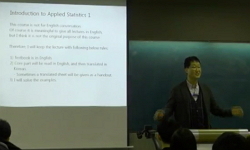The location template matching (LTM) method is a technique of identifying an impact location on a structure, and is often applied to structural health monitoring and large scale human-computer interface (HCI) systems. The LTM method utilizes a certain...
http://chineseinput.net/에서 pinyin(병음)방식으로 중국어를 변환할 수 있습니다.
변환된 중국어를 복사하여 사용하시면 됩니다.
- 中文 을 입력하시려면 zhongwen을 입력하시고 space를누르시면됩니다.
- 北京 을 입력하시려면 beijing을 입력하시고 space를 누르시면 됩니다.
https://www.riss.kr/link?id=A101913915
- 저자
- 발행기관
- 학술지명
- 권호사항
-
발행연도
2016
-
작성언어
Korean
- 주제어
-
KDC
424
-
등재정보
KCI등재
-
자료형태
학술저널
-
수록면
172-178(7쪽)
-
KCI 피인용횟수
1
- DOI식별코드
- 제공처
-
0
상세조회 -
0
다운로드
부가정보
다국어 초록 (Multilingual Abstract)
The location template matching (LTM) method is a technique of identifying an impact location on a structure, and is often applied to structural health monitoring and large scale human-computer interface (HCI) systems. The LTM method utilizes a certain measure of similarity between two time signals. The correlation coefficient is most widely used for this purpose, and the group delay based method is recently proposed to improve the accuracy of finding the best matching pair of signals. In practice, one of key essential consideration for implementing the LTM method is to guarantee that a sufficient number of vibration modes must be contained in the measured signal, and yet the lower sampling rate is needed for a real-time implementation. In this paper, the properties of correlation coefficient and group delay with respect to the number of vibration modes are investigated. A few important results are obtained through extensive computer simulations and experiments. If the number of vibration modes contained in the measured signal is more than four it is sufficient for the correlation based LTM method, while the group delay based LTM method requires smaller number of vibration modes.
참고문헌 (Reference)
1 Pham, D. T., "Tangible Acoustic Interface Approaches" 497-502, 2005
2 Sulaiman, A., "Source Localization in the Presence of Dispersion for Next Generation Touch Interface" 82-86, 2010
3 Fahy, F., "Sound and Structural Vibration: Radiation, Transmission and Response" Academic Press 2007
4 Paradiso, J. A., "Sensor Systems for Interactive Surfaces" 39 (39): 892-914, 2000
5 Yang, H., "On the Practical Consideration of Source Localization Using the Location Template Matching (LTM) with Multiple Sensors" 157-158 : 441-446, 2012
6 신기홍, "Location Template Matching(LTM) 방법에 사용되는 유사성 척도들의 비교 연구" 한국소음진동공학회 24 (24): 310-316, 2014
7 Yap, X., "Localization of Acoustic Source on Solids: A Linear Predictive Coding based Algorithm for Location Template Matching" 2490-2493, 2010
8 Ing, R. K., "In Solid Localization of Finger Impacts Using Acoustic Time-reversal Process" 87 (87): 204104-, 2005
9 Shin, K., "Group Delay Based Location Template Matching Method for the Identification of the Impact Location on a Plate" 332 (332): 2111-2117, 2013
10 Shin, K., "Fundamentals of Signal Processing for Sound and Vibration Engineers" Wiley 2008
1 Pham, D. T., "Tangible Acoustic Interface Approaches" 497-502, 2005
2 Sulaiman, A., "Source Localization in the Presence of Dispersion for Next Generation Touch Interface" 82-86, 2010
3 Fahy, F., "Sound and Structural Vibration: Radiation, Transmission and Response" Academic Press 2007
4 Paradiso, J. A., "Sensor Systems for Interactive Surfaces" 39 (39): 892-914, 2000
5 Yang, H., "On the Practical Consideration of Source Localization Using the Location Template Matching (LTM) with Multiple Sensors" 157-158 : 441-446, 2012
6 신기홍, "Location Template Matching(LTM) 방법에 사용되는 유사성 척도들의 비교 연구" 한국소음진동공학회 24 (24): 310-316, 2014
7 Yap, X., "Localization of Acoustic Source on Solids: A Linear Predictive Coding based Algorithm for Location Template Matching" 2490-2493, 2010
8 Ing, R. K., "In Solid Localization of Finger Impacts Using Acoustic Time-reversal Process" 87 (87): 204104-, 2005
9 Shin, K., "Group Delay Based Location Template Matching Method for the Identification of the Impact Location on a Plate" 332 (332): 2111-2117, 2013
10 Shin, K., "Fundamentals of Signal Processing for Sound and Vibration Engineers" Wiley 2008
11 Arun, K. R., "A Touch Interface Exploiting Time-Frequency Classification Using Zak Transform for Source Localization on Solids" 13 (13): 487-497, 2011
동일학술지(권/호) 다른 논문
-
- 한국소음진동공학회
- 공경수(Kyung-Soo Kong)
- 2016
- KCI등재
-
콘크리트 슬래브와 바닥 상부구조가 일체된 바닥구조의 바닥충격음
- 한국소음진동공학회
- 문대호(Dae Ho Mun)
- 2016
- KCI등재
-
수중익형 주변 유동장에서의 공동현상과 유동소음에 대한 수치적 연구
- 한국소음진동공학회
- 김상현(Sanghyeon Kim)
- 2016
- KCI등재
-
유속 및 파이프 두께 측정 겸용 초음파 트랜스듀서 개선
- 한국소음진동공학회
- 김주완(Ju Wan Kim)
- 2016
- KCI등재
분석정보
인용정보 인용지수 설명보기
학술지 이력
| 연월일 | 이력구분 | 이력상세 | 등재구분 |
|---|---|---|---|
| 2026 | 평가예정 | 재인증평가 신청대상 (재인증) | |
| 2020-01-01 | 평가 | 등재학술지 유지 (재인증) |  |
| 2017-01-01 | 평가 | 등재학술지 유지 (계속평가) |  |
| 2013-01-01 | 평가 | 등재학술지 유지 (등재유지) |  |
| 2010-01-01 | 평가 | 등재학술지 유지 (등재유지) |  |
| 2009-02-05 | 학회명변경 | 영문명 : Korean Society For Noise And Vibration Engeering (Ksnve) -> Korean Society for Noise and Vibration Engineering(KSNVE) |  |
| 2008-01-01 | 평가 | 등재학술지 유지 (등재유지) |  |
| 2006-01-01 | 평가 | 등재학술지 유지 (등재유지) |  |
| 2004-01-01 | 평가 | 등재학술지 유지 (등재유지) |  |
| 2001-07-01 | 평가 | 등재학술지 선정 (등재후보2차) |  |
| 1999-01-01 | 평가 | 등재후보학술지 선정 (신규평가) |  |
학술지 인용정보
| 기준연도 | WOS-KCI 통합IF(2년) | KCIF(2년) | KCIF(3년) |
|---|---|---|---|
| 2016 | 0.28 | 0.28 | 0.26 |
| KCIF(4년) | KCIF(5년) | 중심성지수(3년) | 즉시성지수 |
| 0.25 | 0.23 | 0.457 | 0.05 |





 ScienceON
ScienceON DBpia
DBpia


